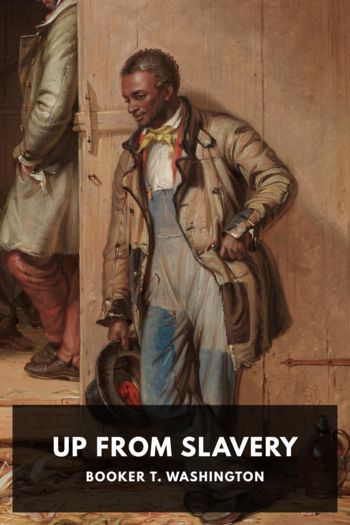Genre Other. Page - 292

Description
In The Golden Bowl, an impoverished Italian aristocrat comes to London to marry a wealthy American, but meets an old mistress before the wedding and spends time with her, helping her pick out a wedding gift. After their marriage, his wife maintains a close relationship with her father, while their own relationship becomes strained.
Completed in 1904, Henry James himself considered The Golden Bowl one of his best novels, and it remains one of critics’ favorites. Along with The Wings of the Dove and The Ambassadors, the novel represents James’ “major phase,” where he returned to the study of Americans abroad, which dominated his earlier career. The novel focuses almost entirely on four central characters, and explores themes of marriage and adultery in an intricate psychological study, which some critics have even suggested anticipates the style of stream-of-consciousness writing.

Description
Gulliver’s Travels was published in 1726 and is probably the most famous work by Jonathan Swift. It was an instant hit—selling out within a week—and has never been out of print, as well as having been adapted many times.
Lemuel Gulliver, an English surgeon on the Antelope, is shipwrecked and washed up on the island of Lilliput, where the inhabitants are less than six inches tall. This part of the book is a thinly veiled attack on the political classes of the time, as the Lilliputians focus on the minutiae of life, most notably the rift which has developed according to which end of a boiled egg gets opened at breakfast—the big end or the little end.
On his second recorded journey he is abandoned on an island of giants where he is paraded as a curiosity at local markets and fairs. On his third journey he is marooned by pirates and is rescued by the inhabitants of a floating island devoted to music, mathematics and astronomy. On his final journey he meets the Houyhnhnms, a race of talking horses who have subdued the Yahoos, creatures who resemble humans.
On his return to England, Gulliver has a very different outlook on life and views the human race in a very different way.

Description
Suetonius was a Roman historian born in about 69 AD, shortly after the death of the emperor Nero. This book, detailing the lives of the twelve Roman emperors who were known as “Caesar”—some by a family connection to Julius Caesar, some just as a title—is considered to be Suetonius’ most important work.
The Lives of the Caesars is a detailed account of the often dramatic lives of these emperors, whose abilities and morals varied enormously; from the capable, stable Augustus, to the insane Caligula. Several of these men died violently either by their own hand or by assassins. Suetonius, though, is careful to give credit where it is due, outlining the better actions and laws of each alongside an account of the crimes and immoralities they also carried out.
This turbulent period of Roman history has often been depicted in fiction and in media, drawing on the work of Suetonius and other contemporary historians. For example, Robert Graves’ novel I, Claudius (1934), which was made into a highly-controversial television series by the BBC in 1976.

Description
Leonid Andreyev was a Russian playwright and author of short stories and novellas, writing primarily in the first two decades of the 20th century. Matching the depression he suffered from an early age, his writing is always dark of tone with subjects including biblical parables, Russian life, eldritch horror and revolutionary fervour. H. P. Lovecraft was a reader of his work, and The Seven Who Were Hanged (included here) has even been cited as direct inspiration for the assassination of Arch-Duke Ferdinand: the event that started the first World War. Originally a lawyer, his first published short story brought him to the attention of Maxim Gorky who not only became a firm friend but also championed Andreyev’s writing in his collections to great commercial acclaim.
Widely translated into English during his life, this collection comprises the best individual translations of each of his short stories and novellas available in the public domain, presented in chronological order of their original publication in Russian.

Description
When her husband dies and leaves his estate to his son from a former marriage, Mrs. Dashwood and her three daughters are offered a cottage on the estate of a distant relative. The two oldest daughters fall in love, only to find that the objects of their affection have secrets that throw their lives into an uproar. The reserved oldest daughter and impetuous, fiery middle daughter will take very different journeys to discovering the true worth of their respective beaus.
Published in 1811, Sense and Sensibility, was largely written fifteen years earlier, when Austen was approximately the same age as her older protagonist Elinor. It was published anonymously (“By A Lady”), possibly due to propriety, or perhaps because she wanted to avoid any negative publicity if the book was not well-received. She needn’t have worried; it sold out its first printing of a modest 750 copies. She used well-defined characters, humor, and satire to paint a vivid picture of life in the England of George III, with all of its manners, class issues, and unwritten rules of behavior. That it’s still being read over two hundred years later is a testimony to her brilliance.

Description
Esmeralda is a breathtaking beauty and attracts the attention of men all around her, including an actor, a captain, and an archdeacon, to whom she is of course forbidden. But because of a kindness she paid to him, there is one whose love for her is pure: the archdeacon’s bellringer. The actions of the archdeacon, who cannot control his lust for the young woman, ultimately draws all four men into her orbit, and his, with tragic consequences.
Hugo’s tragic novel is an ode to gothic architecture in general and that of Notre-Dame de Paris in particular. Hugo was upset both at the neglect of buildings like Notre-Dame, and the modernization of those that weren’t being neglected. By centering on the building, he was able to bring all classes into his story: from kings and nobles to bellringers and sewer rats. The first American translation changed the title to “The Hunchback of Notre Dame,” shifting attention to the bellringer, but Hugo’s focus was always on Notre-Dame and the beautiful gothic architecture of Paris.

Description
The irrepressible Tom Sawyer drives his Aunt Polly to distraction; she can’t decide whether to cry or laugh at his antics. He fights, falls in love, and finds adventure with two of his friends, one of whom will later become famous in his own right. Along the way he attends his own funeral, wins the girl by falsely confessing to something she did, and, most famously, convinces most of the boys in town to pay him for the privilege of painting his aunt’s fence.
The Adventures of Tom Sawyer was Mark Twain’s first novel written solely by himself. Although he was already a well-known author, it was for autobiographical sketches (The Innocents Abroad) and novels written with others (The Gilded Age). In writing about Tom, Twain drew on his childhood growing up in Hannibal, Missouri, infusing the story with his usual biting satire and social commentary. In Tom Sawyer and his friends, Twain created young men who would long outlive him. Not without controversy over the years due to its language and negative depiction of a Native American, The Adventures of Tom Sawyer is arguably Twain’s most endearing, and enduring, work.

Description
Booker Taliaferro Washington began life as a slave in Virginia shortly before emancipation, but rose to become one of the most celebrated leaders the African American community has ever had. His principal occupation was as president of the Tuskegee Institute, which he founded in 1881, but he earned national renown as an orator, writer and political advisor. His address at the Atlanta Exposition was a pivotal moment in race relations in America.
Washington believed deeply in the dignity of physical labor, and that merit and talent are eventually rewarded regardless of race or class. The Tuskegee Institution was primarily a technical college, and aimed to teach industrial skills in addition to academic training. Students built many of the buildings on the campus, grew the food that was eaten there, and even made the furniture, tools and vehicles used by the school.
Up from Slavery was originally published as a serialized work in The Outlook, a Christian magazine based in New York, before being collected in a single volume in 1901. This edition includes an introduction by Walter H. Page, a future U.S. ambassador to the United Kingdom.

Description
The Valley of Fear is the final novel in the Sherlock Holmes series by Sir Arthur Conan Doyle. The story originally appeared over several issues of the monthly Strand Magazine in late 1914 before being published as a standalone work. While Doyle would continue to publish Sherlock Holmes short stories until 1927, The Valley of Fear remains Holmes’ final long-form appearance.
In the novel, Holmes and his assistant Watson are called to assist with an investigation into the murder of John Douglas, a man shot in his own home at point-blank range with a shotgun. As evidence is examined and witnesses within the house are questioned, Holmes uncovers holes in testimonies and a connection to a secret society that no one wishes to discuss.

Description
Perhaps best known for creating the character Fu-Manchu, Sax Rohmer is also known for his works involving the supernatural. This novel follows Robert Cairn, his father, Dr. Bruce Cairn, and their suspicion of one Antony Ferrara.
After witnessing the strange and violent death of a swan, Robert Cairn suspects that Ferrara may be involved with the death of the bird. Soon after two murders, Dr. Bruce Cairn arrives in London and warns Robert that he suspects Ferrara is using ancient Egyptian magic to accomplish his evil deeds. After a mystical attack on Robert, Dr. Cairn and his son become involved in a series of supernatural events as they work to prevent Antony Ferrara from inflicting his dark magic on more victims.
Like many of his works, Rohmer includes exotic locations in this novel; first set in London, the action soon moves to the pyramids of Egypt as the father and son duo track down Ferrara. Having received both success and notoriety from Fu-Manchu, Rohmer has been given praise for Brood of the Witch-Queen, such as when H. P. Lovecraft favorably compared it to Bram Stoker’s Dracula.